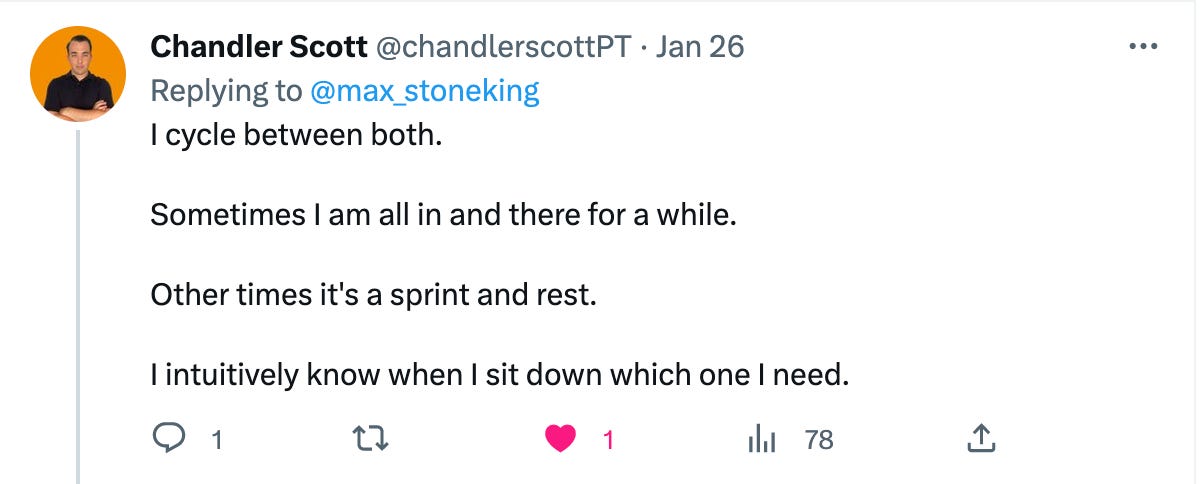“Just be consistent”.
The phrase is rampant, at least among those with whom I associate. It’s sound advice too, but consistency is hard to execute.
How exactly can consistency be implemented? What does it look like?
The answer lies in what is known as the compound effect. Creating something that compounds requires frequent engagement in tasks that inch, not shove, you toward your desired outcome.
I enjoy models and frameworks, so let’s call this idea the frequency model. It can be applied to a daily workflow, studying, or an exercise program. The following is an excerpt from my new book explaining the rationale for the model as it applies to endurance training:
The more often an athlete can engage in triathlon-specific activities, the better. Shorter and more frequent sessions allow for faster recovery to come back and repeat the sessions again the next day. This is known as the frequency model and is preferred because it lends itself to making an athlete more consistent.
If achieving a compounding effect is the goal for being consistent, what better way to stack up the work than by setting the precedent for getting a little bit done at a time? Working in small bites can make that massive task seem more digestible. It is all about accumulating many reps over a certain period of time to foster growth.
I wanted to extend this assertion beyond sports because I think it applies to any high-performance domain. I turned to Twitter to find out how others may be (or not be) implementing a similar strategy as it applies to work or getting stuff done. Everyone has “stuff” to do!

Some of the usual suspects chimed in with some intriguing viewpoints.
Chandler’s response made me think about how to get started with committing to consistency. Being consistent is initiated by doing frequent spurts of work because that is what we are best equipped to handle at the start of any large project.
Biting off more than you can chew from the start is overwhelming. Impatience is often the reason we try to take on too much.
However, consistency becomes part of who we are as we gain reps, setting up for those big days of work, studying, and training, with less risk of running out of steam or sacrificing quality. The groundwork has been laid slowly through frequency. The endurance has been developed, permitting you to succeed in going all in when you might be on the clock before a major deadline.
What does the frequency model look like in practice?
60-90 minute bouts of uninterrupted work, daily, per Brady’s strategy.
30 minutes per day, multiple days in a row, studying a topic as opposed to relying on one 10-hour day to get you prepared.
A few 30-minute runs or swims during the week as opposed to a single one-hour session.
Knowing what to do to achieve consistency is simple. None of these items above are complex ideas. The difficulty is in accepting that repeatability takes time and is monotonous.
Of course, there is a time and place for a long bout of work. That is part of building endurance to handle difficult things. You will need that 8-hour day of studying or that 2-hour long run from time to time, but those days are draining and hard to repeat. You can’t run a marathon every day.
The frequency model bridges the gap between doing nothing and being heroic, leaving you having accumulated the necessary reps that define steady progress.




When it comes to studying, I’m a big fan of 20-25 minutes of work followed by 5-10 minutes off. It feels very sustainable and I am engaged with my studying the entire time. Knowing I have a finite time for each keeps me on my toes and prevents wasted time (ie, zoning out or reading without intention).
When it comes to training, I prefer to separate my training sessions within a single day. This way, I can focus on only one session and its goal. It leaves me with a clear objective rather than trying to blend the two together (ie, lifting right after a run). Plus, it fits my schedule better. It’s hard to find more than two hours of time before or after a week day with classes.
I guess you could say I’m a sprinter in the pursuit of consistency.